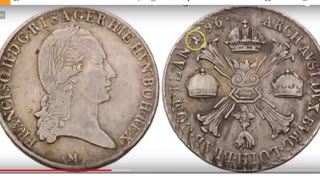Premium Only Content

Automated Hydrogen Generator
Automated Hydrogen Generator
In this video I'll show how I built my Hydrogen gas generator using electrolysis of a 10% Sodium Hydroxide solution with 316 stainless steel electrodes. Unlike an "HHO" generator, this cell separates the hydrogen from the oxygen, so it can be collected in a tank for later use. In the video, I demonstrate its usefulness as a lifting gas for a camera-carrying balloon, but my ultimate goal is to liquify it with a cryocooler at -252C or use it as a working fluid in a stirling cycle to serve as a cheap and plentiful substitute for helium. I'm also interested in using it to manufacture synthetic methane by combining it with CO2 in a process known as the Sabatier reaction.
The theoretical voltage required to separate water by electrolysis is 1.23V, but in reality it will end up being 1.5-2.0 volts, depending on the electrolyte and electrode chemistry, as well as cell temperature. In order to maximize efficiency and minimize the occurance of heating and side reactions, the voltage on a cell should be kept as low above this threshold as possible. Most industrial devices have a cell voltage somewhere between 2.2-2.5 volts. The efficiency of electrolysis is approximately the threshold voltage divided by the cell voltage.
The calculation to approximate hydrogen production rate is:
Liters per hour = V_threshold * Current * 3600 / 287,000 * 24
The production rate of oxygen gas is half this amount.
One potential pitfall of hydrogen storage in pressure vessels or use as a working fluid in cryocoolers / heat engines is the tendency for atomic hydrogen to work its way into the crystal lattice of metals and cause it to become brittle, similar to how adding carbon to steel makes it more brittle. Supposedly this can be mitigated by ensuring the hydrogen gas is totally dry, and aluminum / copper seem to be far less affected by this issue than steel.
It's important to remember that if you're using stainless steel electrodes, over a long period of time, they can degrade and release toxic chromium salts into the electrolyte, some of which may be the hexavalent (Cr6+) form of Chromium. This electrolyte can't be dumped down the drain. To dispose of it properly, you need to evaporate the water and deliver the precipitate to a hazardous waste disposal site.
Aqueous solution conductivity chart:
https://pdfs.semanticscholar.org/cbc5...
-
 19:52
19:52
joegecko's Documentary Channel
3 hours ago1000 FAKE YEARS OF HISTORY - DARK AGES NEVER EXISTED
113 -
 LIVE
LIVE
DeadMomAlive
6 hours agoFace Paint Satur-SLAY! Fall Pumpkin! #BIRTHDAYMONTH
75 watching -
 DVR
DVR
RiftTV
6 hours agoThe Death Rattle Of Con Inc BEGINS | SLIGHTLY OFFENSIVE
27.5K3 -
 3:04:43
3:04:43
Mally_Mouse
11 hours ago🌶️ 🥵Spicy BITE Saturday!! 🥵🌶️- Let's Play: Shift Happens
65.3K1 -
 LIVE
LIVE
TinyPandaface
1 day agoYour FACE is a Gaming Channel! | Homebody - Part 4
46 watching -
 2:56:32
2:56:32
Welcome to The Continental
3 hours ago🟩 ARC and Raiders 🐔
1.1K2 -
 DVR
DVR
NewsTreason
2 hours agoDECLAS w/ Rambo & Dave: The Nuclear Option End Game | Future Proves Past: Subpoenas Fly, 8pm EST
37.4K44 -
 40:06
40:06
Tundra Tactical
4 hours ago🛑LIVE NOW!! Honest Gun Company Slogans Gun Mad Libs and Much More
1.49K1 -

FrizzleMcDizzle
2 hours agoR.E.P.O. with friends
199 -
 LIVE
LIVE
Damysus Gaming
1 hour agoARC Raiders - Those DAMN SNITCHES Will be the Death of Me!!!!
5 watching